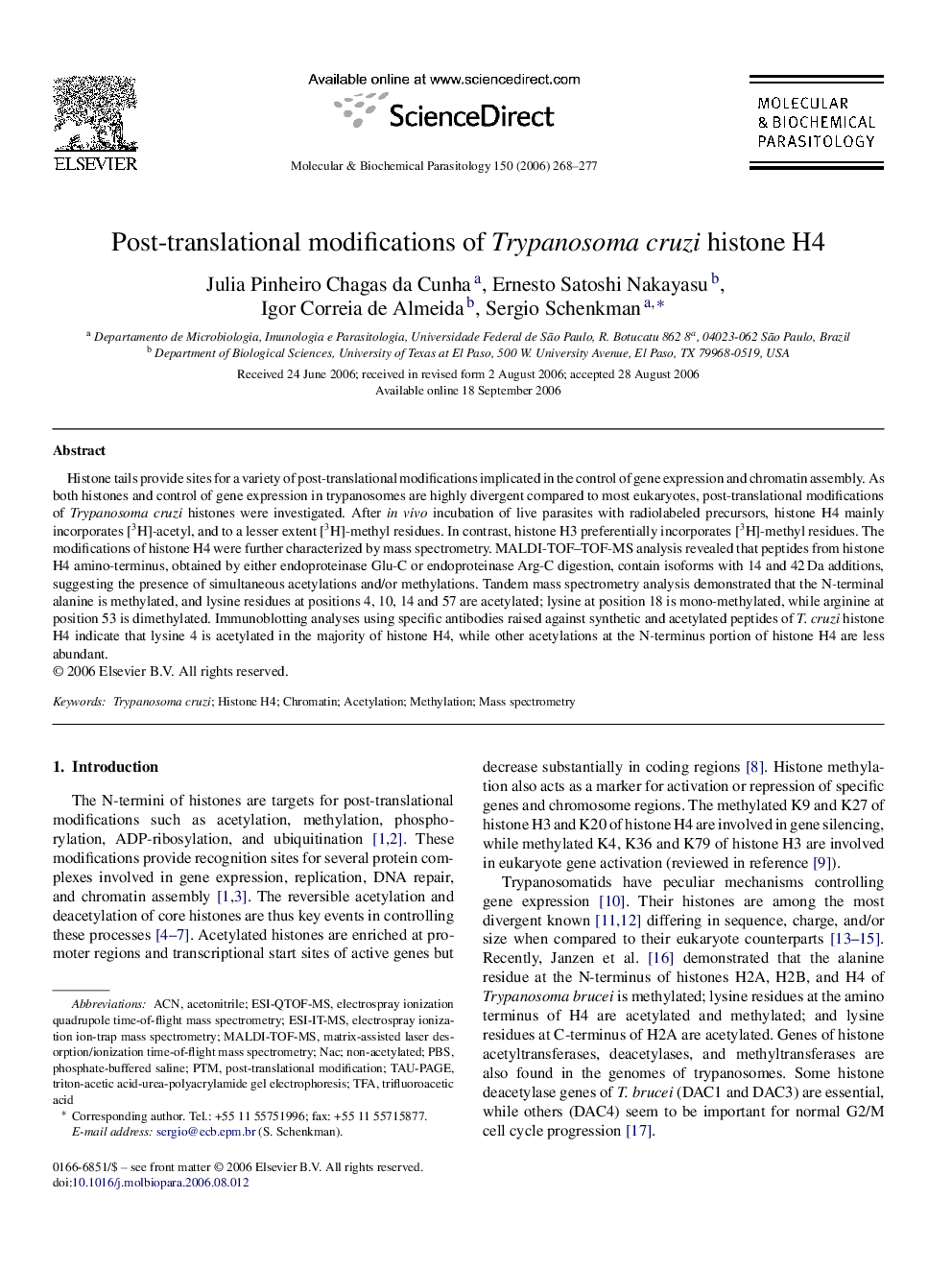| Article ID | Journal | Published Year | Pages | File Type |
|---|---|---|---|---|
| 5916155 | Molecular and Biochemical Parasitology | 2006 | 10 Pages |
Abstract
Histone tails provide sites for a variety of post-translational modifications implicated in the control of gene expression and chromatin assembly. As both histones and control of gene expression in trypanosomes are highly divergent compared to most eukaryotes, post-translational modifications of Trypanosoma cruzi histones were investigated. After in vivo incubation of live parasites with radiolabeled precursors, histone H4 mainly incorporates [3H]-acetyl, and to a lesser extent [3H]-methyl residues. In contrast, histone H3 preferentially incorporates [3H]-methyl residues. The modifications of histone H4 were further characterized by mass spectrometry. MALDI-TOF-TOF-MS analysis revealed that peptides from histone H4 amino-terminus, obtained by either endoproteinase Glu-C or endoproteinase Arg-C digestion, contain isoforms with 14 and 42Â Da additions, suggesting the presence of simultaneous acetylations and/or methylations. Tandem mass spectrometry analysis demonstrated that the N-terminal alanine is methylated, and lysine residues at positions 4, 10, 14 and 57 are acetylated; lysine at position 18 is mono-methylated, while arginine at position 53 is dimethylated. Immunoblotting analyses using specific antibodies raised against synthetic and acetylated peptides of T. cruzi histone H4 indicate that lysine 4 is acetylated in the majority of histone H4, while other acetylations at the N-terminus portion of histone H4 are less abundant.
Keywords
PTMPBSESI-QTOF-MSACNNACTFAAcetonitrileAcetylationmatrix-assisted laser desorption/ionization time-of-flight mass spectrometryTrifluoroacetic acidpost-translational modificationTrypanosoma cruziMass spectrometryElectrospray ionization quadrupole time-of-flight mass spectrometryMALDI-TOF-MSMethylationPhosphate-buffered salineHistone H4Chromatin
Related Topics
Life Sciences
Biochemistry, Genetics and Molecular Biology
Molecular Biology
Authors
Julia Pinheiro Chagas da Cunha, Ernesto Satoshi Nakayasu, Igor Correia de Almeida, Sergio Schenkman,
